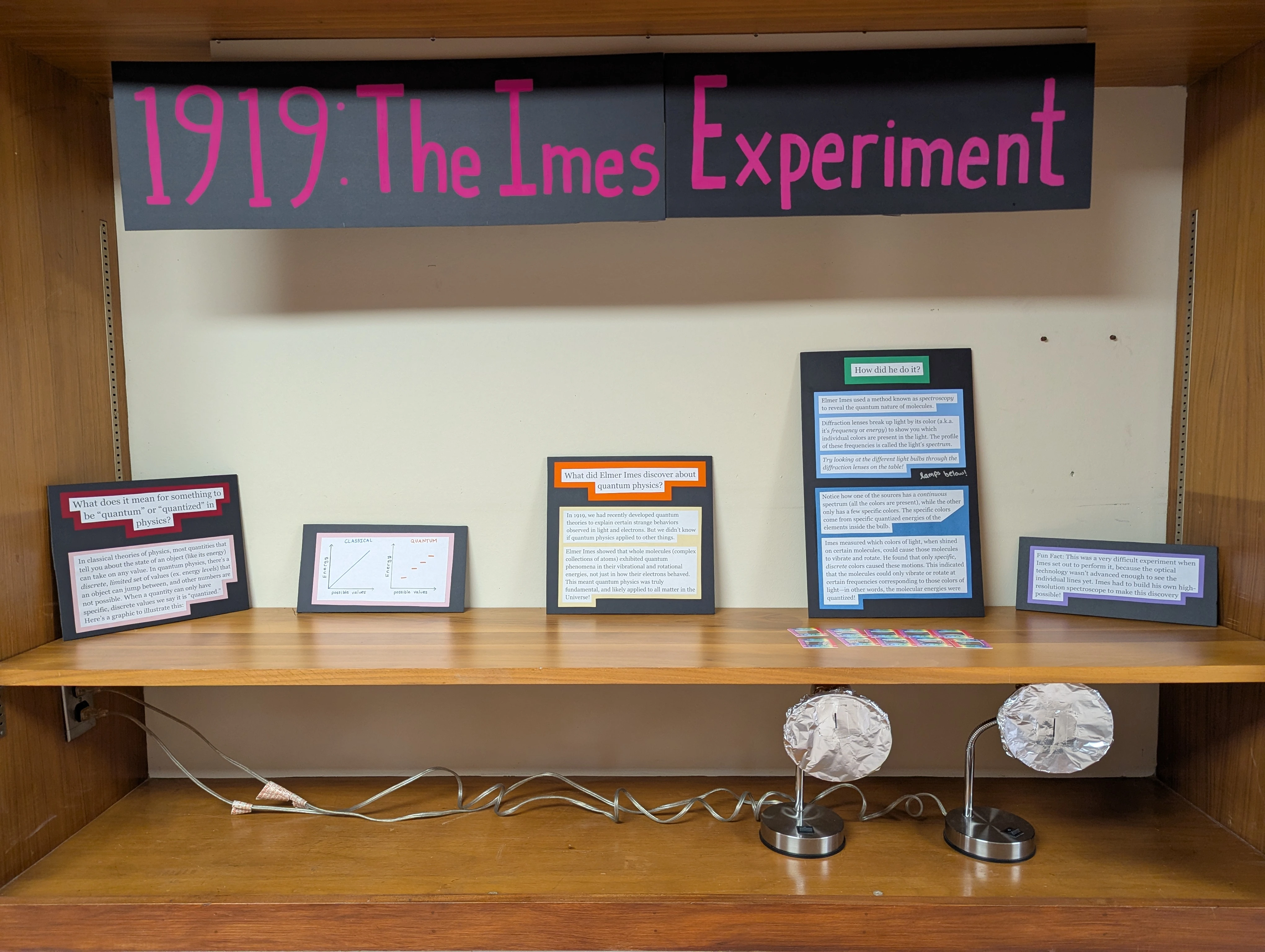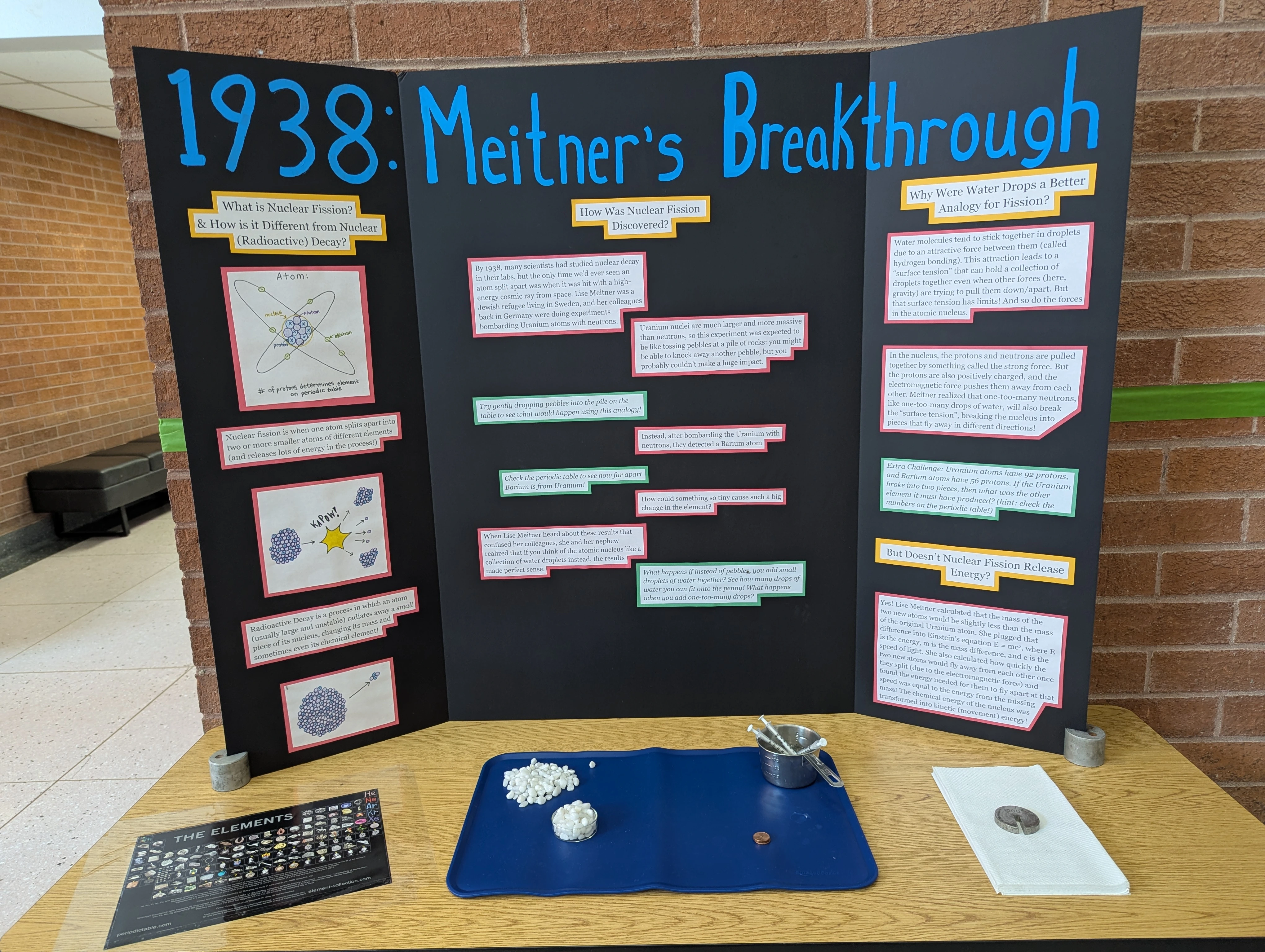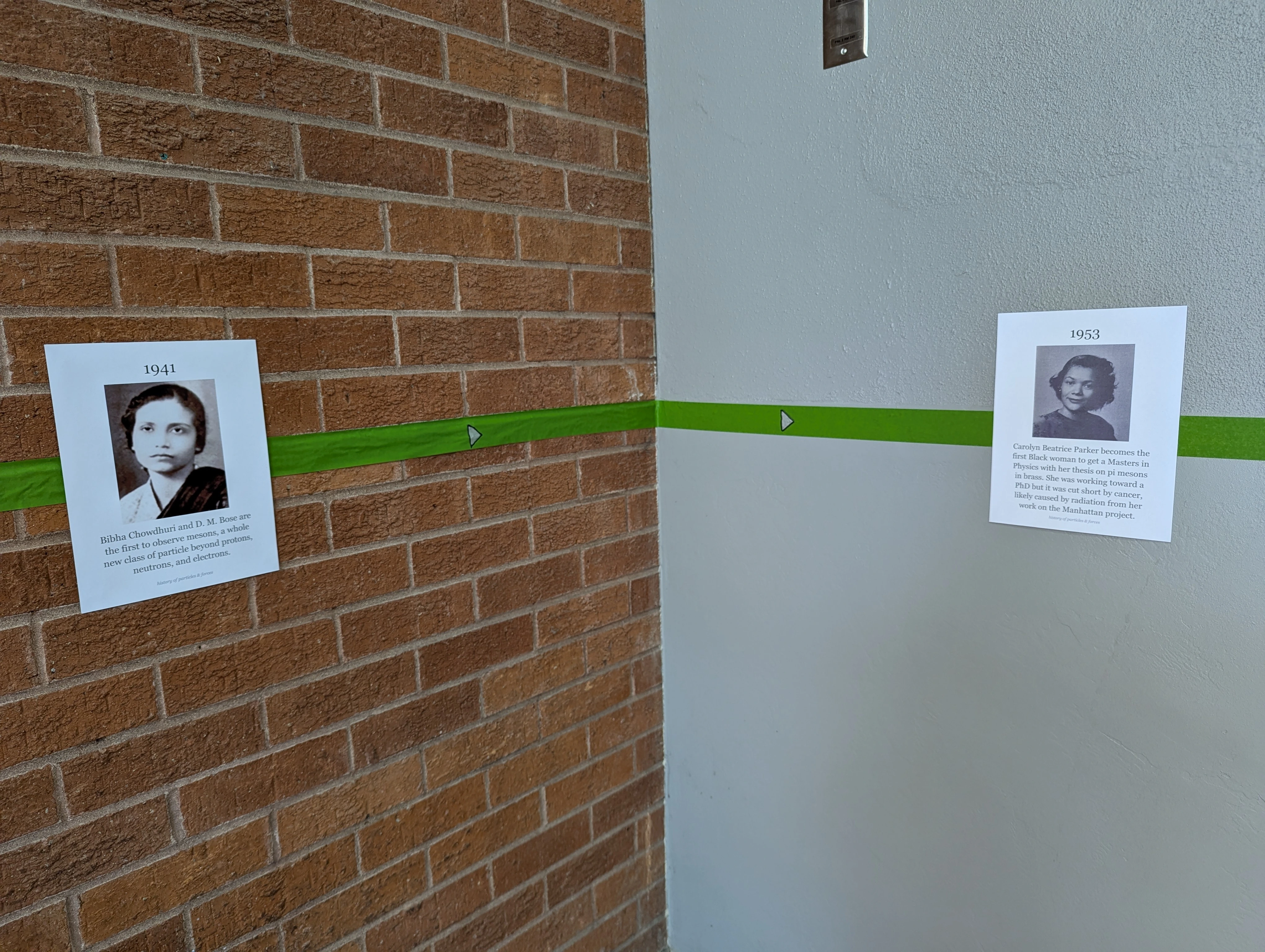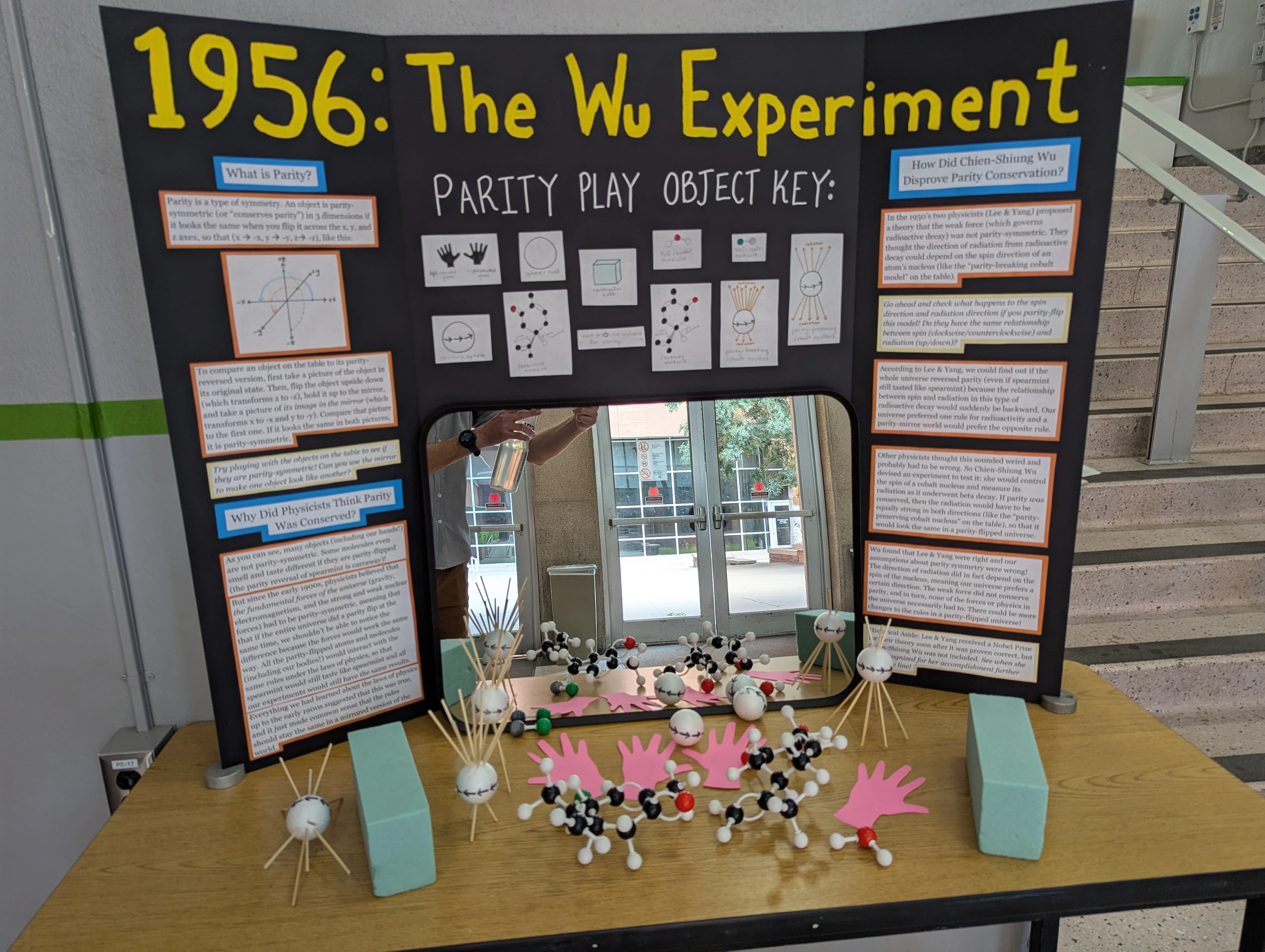Interactive Physics History Exhibits made by PhD Student Maria Mutz
Oct. 2, 2025
Image
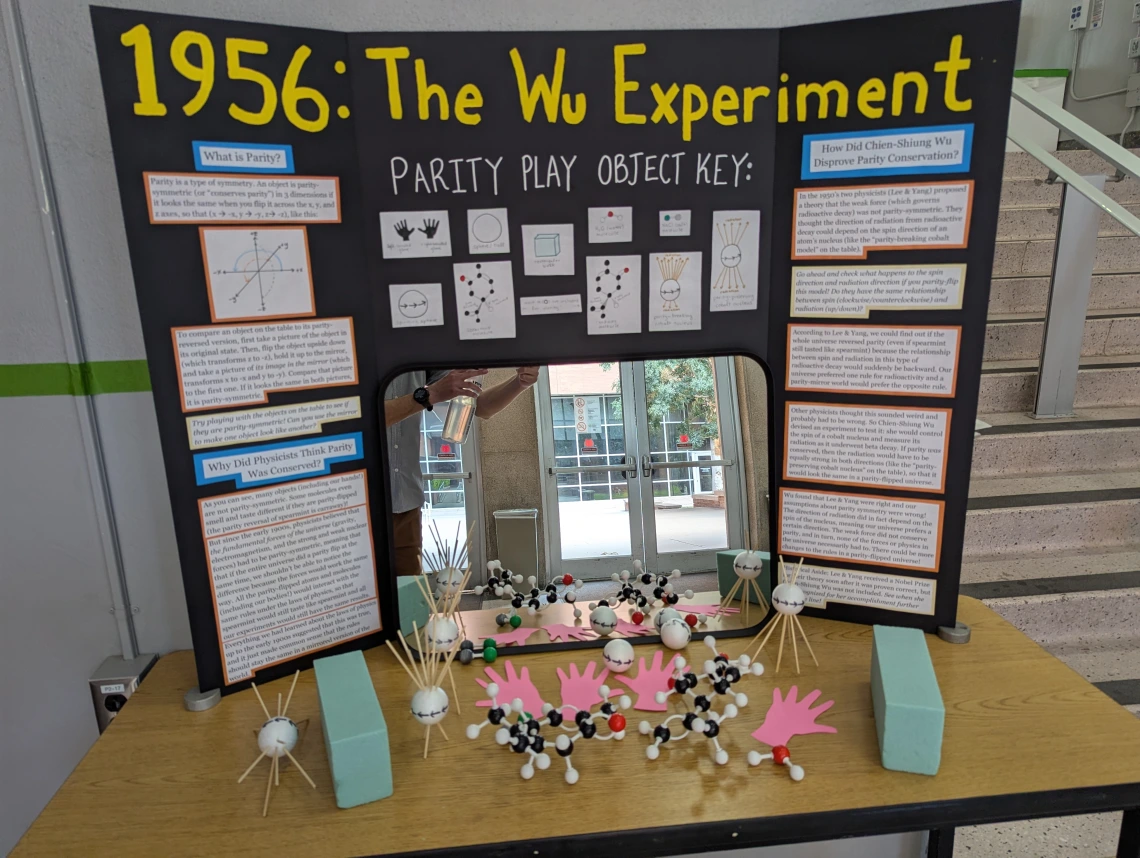
The lobby of our Physics building currently features a wonderful exhibition on the history of particle physics created by PhD student Maria Mutz. Maria described it as follows:
"The new Interactive Physics History Exhibits depict a timeline of exciting physics experiments, discoveries, and theoretical breakthroughs in history, with the first installation focusing on the history of particles and forces. The interactive stations at several of these historical events provide opportunities for anyone who passes through PAS (physics student or not!) to explore the related physics concepts hands-on and at their own pace. The full layout invites visitors to engage not only with key topics in physics (like nuclear fission, quantization, and symmetry-breaking), but also with the concept of physics itself: What does it mean to study physics? How do physicists learn new things about the universe? Who contributes to the story of physics, and how does that story unfold and change over time?
"My selection of historical events and physicists is not meant to be comprehensive. While you will find a few widely-known names and events, I focused more heavily on achievements of physicists who are not currently celebrated as household names or found in textbooks. Others are included simply because many fellow physicists continue to tell me how much that particular discovery inspires them. I hope the exhibits will prompt visitors from a variety of backgrounds to reflect on their questions and conceptions about physics, gain a deeper understanding of it, and feel welcome and eager to learn in our department."
Maria is doing her PhD research in computational astrophysics. She created this installation as an outreach project that is part of her Arizona Space Grant Fellowship, and the current exhibit is the first of a series she has planned for the physics building. The next exhibit, scheduled for winter 2026, will be focused on the history of optical and astrophysics, and the third, likely to debut in spring or summer, will feature the opportunities to engage with history of computation and space exploration. The installation can be found in the lobby at the west entrance of the PAS building and you can learn more about Maria and her physics engagement projects at mariawaves.com.





